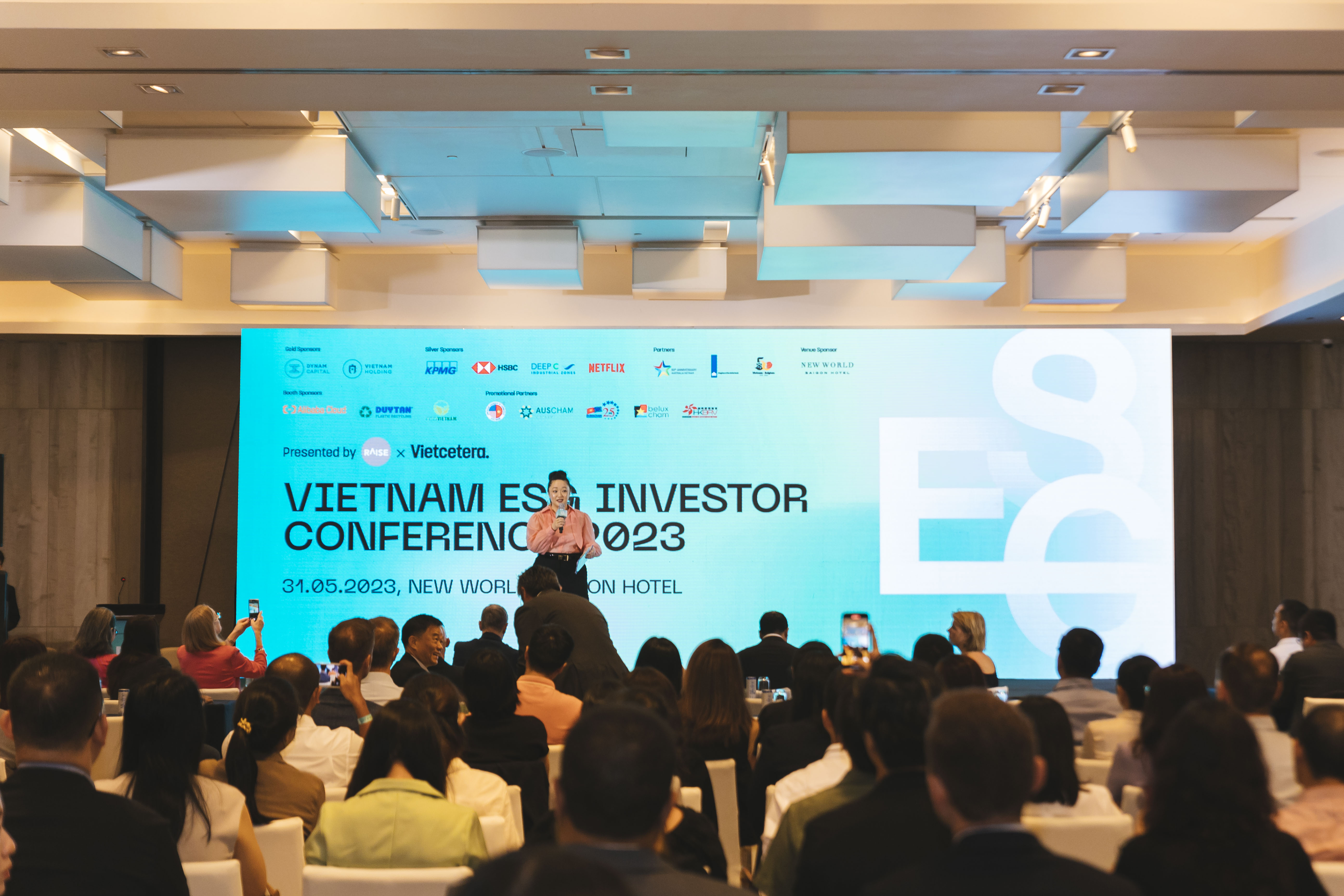Blog by Dzeneta Mulabegovic, Strategic Specialist, UNDP in Viet Nam
What has ESG got to do with development cooperation?
June 23, 2023

Traditionally, the worlds of development and business do not mix well. The prejudice is still that we care for people and the planet, while businesses go after profits. Well, I’ve been to a conference that would challenge that notion.
Two weeks ago, a first ESG Investor Conference was organized in Ho Chi Minh City. The setting was fancier than your average development event, and there were terms such as ‘bankability’ which we mostly shun from our vocabulary. But the rest of it – the inspiring stories, the gender-positive speaker line-up, and even the waste management during the event – was as anything you could wish for at a sustainable development conference. And the best thing about it was that it was the businesses who were arguing that caring for the people and planet would be good for the profits.
ESG, which stands for Environmental, Social and Governance practice, has gotten a negative connotation, in particular after all the talk of the unreliability of ESG and how it can serve as a marketing ploy. In essence, it is a quantifiable assessment of sustainable business practices. ESG strategy focuses on reaching certain performance metrics, setting measurable targets, and conducting audits to verify that the disclosures are accurate. The difficulties begin with the collection of data to measure impact on complex metrics such as climate and inclusivity – a challenge which we, the development workers are all too familiar with.
When done in the right way, practicing ESG can embed sustainable development in the company’s DNA. Formulating an ESG baseline and commitments can integrate sustainability principles into the company’s strategy, changing the discourse of all of those involved. From the operations manager to the HR advisor, the process of internal data collection can help raise the awareness throughout the company. It will not happen overnight, but in a very profound, bottom-up way, this can help us align businesses with the SDGs.
Whereas ESG and SDGs both focus on sustainability, ESG’s link to investment creates a stronger incentive. Total ESG assets around the world are expected to exceed 53 trillion USD by 2025. Developing an ESG report can be an important tool for the SMEs, and in particular the social impact businesses, to tell their story in the language of the potential investors.
Despite the buzz around ESG in Ho Chi Minh City, the actual practice in Viet Nam is still low. ESG can be overwhelming, in particular for SMEs. A key question at the conference was: where to start? The specific knowledge and capacity needed are not readily available. But more importantly, the laws and regulations relevant to ESG are not fully in place yet. Government has made effort to promote ESG practices, ranging from the net-zero ambition for 2050 to the Corporate Sustainability Index. However, businesses serious about sustainability would point out that there is more work to be done to define the ESG regulatory framework in Viet Nam.
Should those businesses try harder to support the government to develop a more ambitious policy framework? We would say yes. Businesses play a pivotal role in sustainable development. That is why we promote the public-private platforms such as the National Plastic Action Partnership and the Viet Nam Circular Economy Hub; the reason behind the business consultations on National Action Plan for Responsible Business Practice; the base for our partnerships with businesses with whom we co-design development solutions in Viet Nam.
At the conference a vice-president of a multinational (MNC) argued that embracing ESG would be the pathway away from cheap manufacturing towards a green growth model. He shared his experience in negotiating the establishment of the first carbon-neutral factory in Viet Nam. For his company, achieving sustainability targets was a decisive factor in choosing Viet Nam as a destination. As ESG is on the rise globally, also other MNCs will increasingly factor in same considerations. It is certainly not the one, single solution to avoiding the middle-income trap, but higher ESG standards throughout the supply chains would encourage the more developed MNCs to come and to stay in Viet Nam, hopefully crowding out the cheaper, less sustainable ones.
Similarly, the ESG lens could support the transition towards the circular economy. The E in ESG is all about minimizing the use of natural resources and the production of waste and pollution. During the conference, a UNDP colleague moderated a panel on circular economy challenges in Viet Nam. Also here attracting ESG investment can help accelerate innovation and scale-up solutions. Moreover, industries practising ESG are compelled to invest in circular design and waste processing for secondary materials. Practicing the S in ESG could support awareness raising and education on responsible consumption and recycling.
So where does this leave us after this ESG Investor conference? I’m looking forward to the next year’s edition. UNDP could support any of the expected discussions, be it on sustainable finance, just energy transition, circular economy, responsible business conduct, social impact businesses or inclusivity and diversity. Because all of those are part of our mission, and ESG has everything to do with it.

 Locations
Locations






